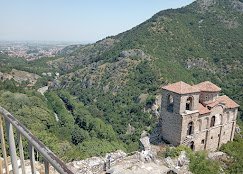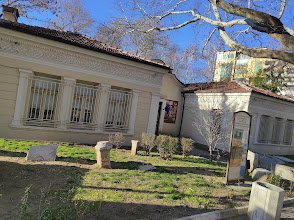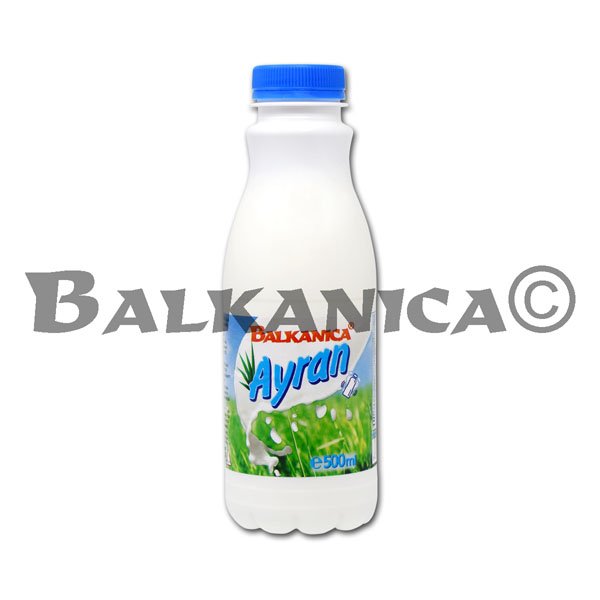Asenovgrad is a city in southern Bulgaria, on the northern slopes of the Rhodope Mountains. The “City of Asena” is located on the edge of the Rhodope Mountains and the Thracian Plain, 20 km south of Plovdiv, on the Chepelary River. It is the seat of the Asenovgrad Municipality.

- Palaeontological Museum Dimitar Kovachev, Asenovgrad. The Dimitar Kovachev Palaeontological Museum, a branch of the National Museum of Natural History at the Bulgarian Academy of Sciences (NMNHS) in Asenovgrad, was created with a contract dated 22/02/1990 between the Bulgarian Academy of Sciences, the National Museum of Natural History and the Asenovgrad Municipality. The museum is a constituent part of the Palaeontology and Mineralogy Department of NMNHS. The museum collections are based on the unique school collection gathered by students from the high school in Asenovgrad, under the guidance of biology teacher Dimitar Kovachev, who organized numerous palaeontological expeditions with their participation, supported by the local municipality. The collection was initially stored in the high school of the town, and when the museum was created it became part of the collections of the NMNHS and was transferred to the building provided by the municipality specifically for a branch of the museum. Dimitar Kovachev was appointed the first curator of the museum and today the museum bears his name, in recognition of his special merits.

- Asen’s Fortress, identified by some researchers as Petrich, is a medieval fortress in the Bulgarian Rhodope Mountains, 2 to 3 kilometers south of the town of Asenovgrad, on a high rocky ridge on the left bank of the Asenitsa River. Asen’s Fortress is located 279 meters above sea level.

- Gorni Voden Monastery “Sveti Sveta Kirik i Yulita”.

- History Museum.

- Food. As in other countries of the Balkan Peninsula, which were under Turkish influence for decades, Bulgaria offers a wide selection of interesting dishes. In larger cities, restaurants, cafes, and fast food outlets can be found on every street, while even in small villages on the coast, small bistro-style cafes offer a quick bite. A traditional Bulgarian breakfast is banitsa with ayran, boza, or kifla with jam or chocolate, or mekitsi – these can be purchased at banitsa shops (баничарница), where they are baked on site. A hearty three-course meal shouldn’t cost more than 10-15 liras. Restaurants from the rapidly growing Happy chain (branches in Plovdiv, Varna, Burgas, and Sofia) are highly recommended, with relatively high prices and a menu that also includes Bulgarian cuisine. Their specialty is grilled dishes. Methanes are very popular in Bulgaria – inexpensive Bulgarian-style restaurants where you can enjoy truly delicious traditional dishes. In many Bulgarian cities, you’ll also find the equivalent of our milk bars, serving traditional Bulgarian dinners and desserts. Fans of “plastic” food will find McDonald’s, Subway, KFC (even in Sunny Beach), and Burger King in Plovdiv, Sofia, Varna, and Burgas. Desserts can be enjoyed in cafes (“sladkarnica” or “sladkarnitsa”), which are just as popular as methanes. Coffee, sipped at cafes, is an integral part of life for most Bulgarians (as well as many residents of the South). If you plan to cook for yourself, stock up on food—vegetables, meat, cheese, and fish—at bazaars (“pazar,” пазар) or greengrocers (“płod–zelenchuk,” плод-зеленчук). Grocery stores are called “shranitełni stoki” (“protective slopes”). What to try: While in Bulgaria, it’s worth sampling the region’s typical dishes and drinks. Here are a few: Ayran (айран)—sour milk (natural yogurt) stirred with cold water, sometimes lightly salted; a perfect drink with sweet rolls. Baklava (баклава) – a very sweet pastry made, similarly to banitsa, from thin slices of dough, between which a filling of crushed nuts is placed, infused with a thick, sweet syrup; excellent with coffee. Banitsa (баница) – a delicacy made from thin dough smeared with fat and layered with various fillings, most often white, salty feta cheese (banica sys sirene), but also (rarely) chopped leek, or served sweet with pumpkin (see tikvenik). Bean chorba (бобова чорба) – a thick bean soup with a very original flavor achieved by the use of the spice jodzhen (curly mint). Boza (боза) – a thick, sweetish drink made from slightly fermented wheat, sold practically everywhere. Poles usually don’t like it, although it’s worth trying boza with banitsa – the combination is perfect for a unique, very original, and filling breakfast. Caca (цаца) – small, deep-fried fish – sprats, somewhat resembling French fries, perfect as a snack with a cold beer. Caca is sold almost everywhere on the Black Sea coast, and can sometimes be found in restaurants in Sofia, Plovdiv, and Veliko Tarnovo. Guvech (гювеч) – meat stewed with vegetables (potatoes, peppers, tomatoes) and spices, immersed in a thick sauce; the dish is served in characteristic, covered clay pots called guvech. There’s also a meatless version – posten giuvecz (постен гювеч). Imambajałdy (имамбаялдъ, which in Turkish means “the imam fainted”) – one of many dishes originating from Turkish cuisine. Vegetarians will especially enjoy it. These hollowed-out eggplants are stuffed with finely chopped onion, garlic, carrots, celery, tomatoes, and parsley, seasoned with pepper and lemon, drizzled with olive oil, and served cold. Kawarma (каварма) – a dish made with pieces of meat fried with onions, spices, and an egg. If you prefer plain grilled meat, ask for skara. Kebapche (кебапче) – baked, elongated cutlets of ground beef, heavily seasoned with ground cumin. They are typically eaten with fried potatoes (french fries) and Shopska salad. Moussaka (мусака) – a dish of ground meat and boiled potatoes, eggplant, or rice, topped with eggs beaten in plain yogurt. Pylneni chushki (пълнени чушки) – baked bell peppers stuffed with feta cheese or meat. Revane (реване) – a type of very sweet pastry dipped in sweet syrup; it goes well with coffee. Syrmi (сърми) – tiny cabbage rolls made from cabbage leaves or often grape leaves (sometimes pickled – these can be purchased at the store). Shkembe chorba (шкембе чорба) – a type of tripe, usually served with a sauce of oil, vinegar, hot chopped chili pepper, and chopped garlic, which is added for spiciness and flavor. Shopska salad reigns supreme on Bulgarian tables. It can be found practically everywhere, in small eateries and restaurants in the mountains and along the coast, where freshly prepared fish is also a hit. Tarator (таратор) – a delicious cold soup, perfect in hot weather, made with plain yogurt, chopped cucumbers, walnuts, and garlic, seasoned with a drizzle of olive oil. Some Bulgarians eat tarator as an appetizer with mastic (aniseed) or plum jam. Triguna (тригуна) – a type of triangular pastry made from thin sheets of dough interspersed with a filling (nuts, almonds, etc.), drizzled with sweet syrup. Tikvenik (тиквеник) – a type of sweet banitsa with a pumpkin filling.




